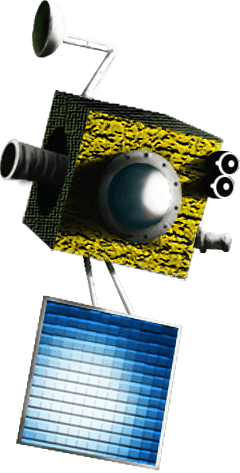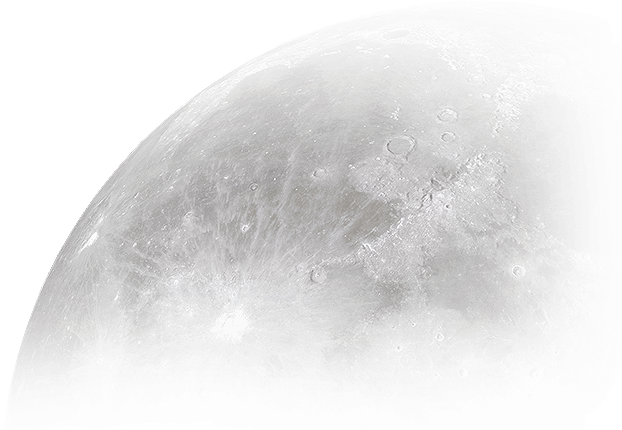











Chandrayaan-2 is the most complicated mission to be organised by the ISRO so far. The spacecraft was built at the U R Rao Satellite Centre in Bengaluru, Karnataka. It will be launched from the Satish Dhawan Space Centre at Sriharikota, Andhra Pradesh. It will carry 13 payloads. It is expected to probe the presence of water at the south pole of the Moon as well as the structure of rocks and minerals on the lunar surface and the quantity of Helium-3 in the atmosphere.

The spacecraft would be carried by the 4,000 kilogram Mk III, the most advanced Geosynchronous Satellite Launch Vehicle (GSLV) series rocket also known as the 'Baahubali of ISRO'. The journey to the Moon will be fuelled by S2000 solid rocket boosters in the first stage. L110 liquid-stage and C25 cryogenic upper-stage motors will power it subsequently in the ascent.
After detaching from the orbiter, the lander will touch down on the Moon. The orbiter will keep circling the Moon for a year. The orbiter carries Terrain Mapping Camera-2 (TMC-2) to take 3D photos of the lunar surface, a Large Area Soft X-ray Spectrometer (LASS) to study the structure of the minerals, a solar X-ray monitor to study solar radiation, Neutral Mass Spectrometer (ChACE-2) to study the atmosphere of the Moon, a synthetic aperture radar (SAR) to scan the Moon using radio waves, an imaging infrared spectrometer to measure the water content on the Moon and an orbiter high-resolution camera to mark the spots where the lander and the rover can touchdown.
Named after Vikram Sarabhai, the father of the Indian space programme, the ‘Vikram’ lander is the most important part of the mission. In its life of one lunar day, which is equivalent to 14 days on Earth, the lander will keep in contact with the ISRO's Indian Deep Space Centre in Bengaluru as well as the orbiter and the rover. Unlike Chandrayaan-1’s Moon Impact Probe, Vikram lander will glide on to the surface in a soft landing. India will join a select league of the United States, Russia and China capable of this technological advancement. Chandrayaan-2’s lander will probe moonquakes with its Instrument for Lunar Seismic Activity (ILSA), measure the surface temperature and plasma density.
The rover is named 'Pragyaan', which means 'wisdom' in Sanskrit. The six-wheeled rover will move at a speed of 1 centimetre per second. It will traverse a total of 150-200 metres on the Moon though it has a capacity of travelling 500 m in its life of 14 days. It is completely powered by solar energy. It will communicate only with the lander. It is equipped with devices such as spectroscope and spectrometer to collect information about the lunar surface.

After the launch from Sriharikota, Chandrayaan-2 will reach an orbit 100 km above the Moon. The lander, which still contains the rover, will detach from the orbiter and soft-land on the Moon near its south pole on September 6 or 7. The rover will start its exploration within four hours of its touchdown. The lander will send the data collected by itself and the rover through the orbiter to Earth for 14 days. The orbiter will continue to send information from its lunar orbit for a year.









The spacecraft’s orbit was raised for the first time on July 24, followed by July 26,29, August 2 and 6th. Chandrayaan began its shift from the earth’s orbit to the moon’s orbit on August 14. After the Lunar Orbit Insertion, the spacecraft entered the moon’s orbit on August 20. Lunar bound orbit manoeuvrer for Chandrayaan2 spacecraft was performed successfully on August 21, 28,30 and September1. On September 1, Chandrayaan’s final lunar bound orbit maneuver performed successfully.

September 2 was a crucial day for Chandrayaan 2. The lander and rover got separated from the orbiter. After the separation of the orbiter and the lander, the orbit was further lowered on September 3. The next day, the orbit was lowered to 36 kilometres. The lander also scanned the planned landing site and prepared a preliminary landing site map. Vikram lander will land on the moon between 1.40 am and 2 am on September 7. The lander will deboost its engine to reduce speed just before landing on the moon. It will steer itself as the south pole is scanned minutely. Once a plain is located and judged safe for landing, the lander will touch down in a historic soft landing. The lander is completely on its own as it makes the soft landing. The control room on earth does not have any control over the lander. The last 15 minutes of the landing is crucial to the success of the mission. The lander is expected to touch base between the Manzinus C and Simpelius N craters in the south polar region. India will be the first country to get a mission on to the south polar region of the moon. India will be the fourth country to make a soft landing on the moon, after the Russia, the United States and China.
Within four hours of the landing, the lander will open up and the Pragyan rover will roll out over a ramp. The rover will transmit collected data to the lander, which will relay it to the orbiter and to the ISRO control centre on earth.

